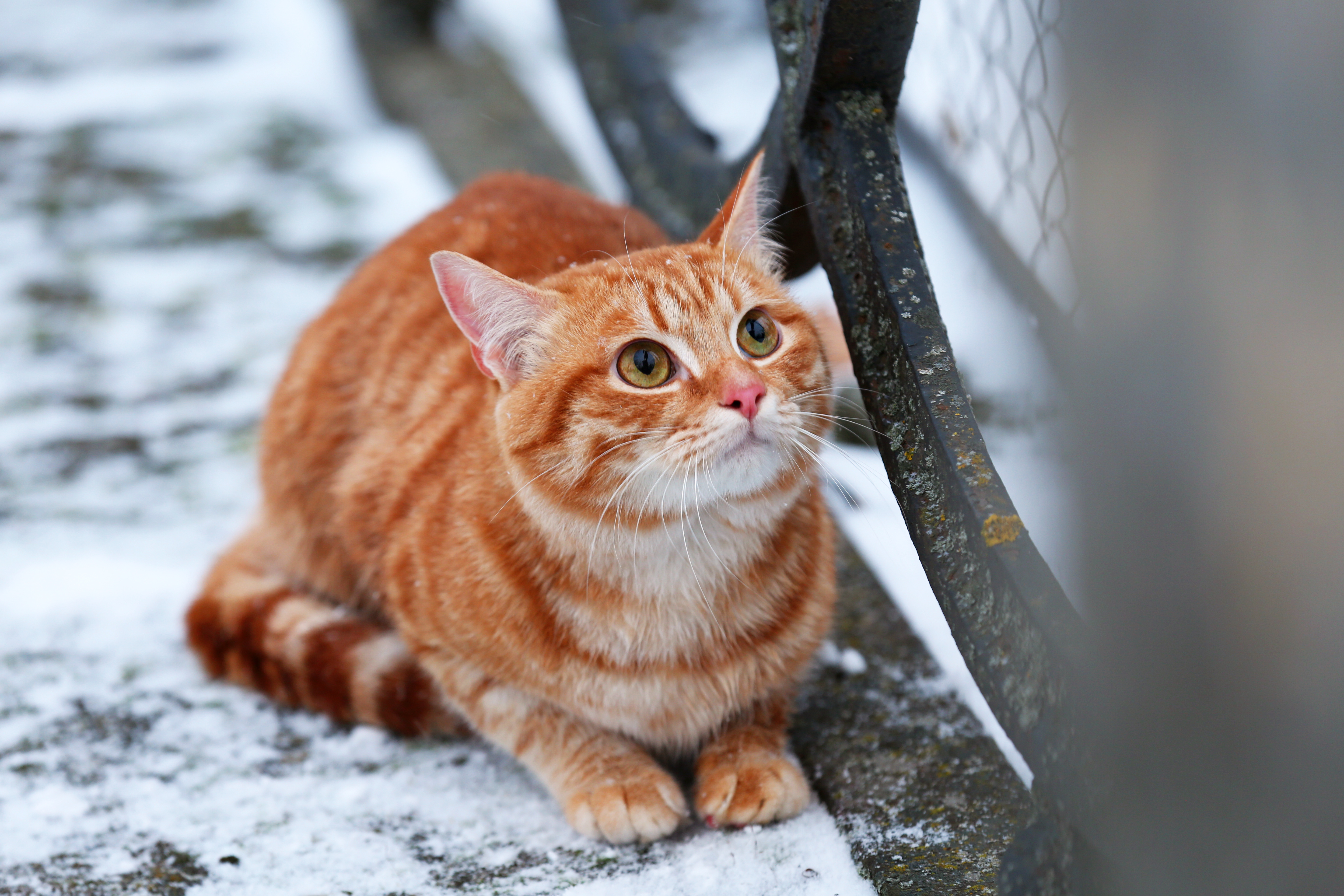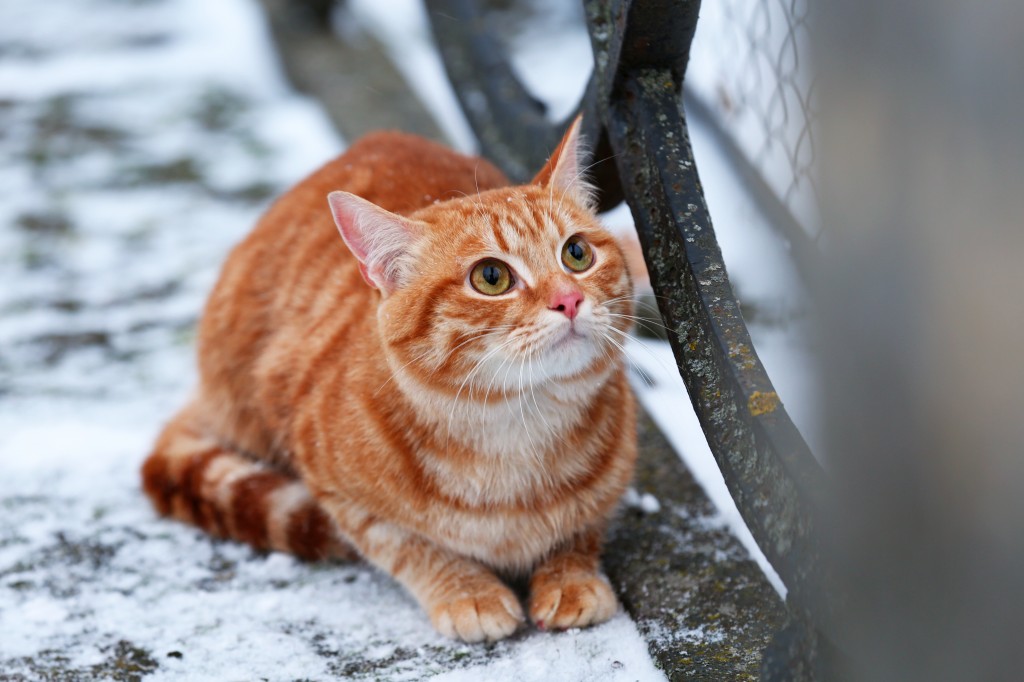
In the Pacific Northwest, the coldest months are probably in January and February. However, the next couple of months can still be chilly and wet, and we’ve been surprised more than once by a late-winter snowstorm. Which means that outdoor kitties will continue to have to deal with less-than-comfortable conditions. And just because cats have fur, it doesn’t mean that outdoor cats are staying as warm as they should. Being an outdoor kitty is a tough life in cold weather, especially if you are a stray (had a guardian at some point) or feral (never socialized with humans and is not “tame”). Indeed, they can use all the help they can get, and may sometime rely on people caring for cats in winter.
If you have neighborhood cats that have limited or no access to the indoors, you can help make these last weeks of winter a bit easier for them by providing a few simple things:
- Food and water. Leaving kibble outside is fairly straightforward, but water is a bit more difficult because it can freeze. A heavy plastic water bowl is more insulated than thin plastic or ceramic, and if you have a sunny spot, take advantage of it. You can also put food and water in a “mini-shelter” that is insulated to keep it from freezing.
- Keep supplies consistent. If you put food and water out and cats start visiting you, please keep that supply consistent so they don’t have to roam (which can be dangerous) and find another source.
- Bang on the hood of your car before starting it up. Some cats will climb up into cars to take advantage of sleeping near a warm engine. Please bang on your car several times before starting your car up – it could save a life (when I was young, this happened to my cat – it was not pretty, but he survived, thankfully).
- Provide a warm, dry shelter. There are a TON of different types of shelters that you can make yourself or buy for outdoor kitties. The most important thing is that they stay dry and are insulated (so don’t put your water source inside a small shelter in case it tips over and soaks/freezes insulating materials). You can make a super-easy shelter by following the instructions of two of our favorite cats, Cole and Marmalade, in this video HERE.
- Trap, Neuter, Return (TNR). One of the most important things you can do is help reduce the population of homeless pets. There are TNR programs in the SW Washington and Portland areas that will loan you traps and do free or low-cost spays and neuters for stray/feral cats (contact the Feral Cat Coalition of Oregon for further information). Some of them even provide additional medical care if necessary. Winter is not a bad time to do this because cats may be more likely to utilize food that you put out in traps, and you’ll get the cats fixed before breeding season starts (which is starting SOON, so act MEOW!).
If you need more information about how to care for your outdoor neighborhood cats, the Humane Society has some excellent resources available for assembling shelters and information about providing necessary supplies for kitties in need. Check out their page about caring for outdoor cats in winter HERE. Even though they may not have homes or a dedicated guardian, outdoor cats deserve the love and care that any other cat gets – I hope you can help one in your neighborhood!

